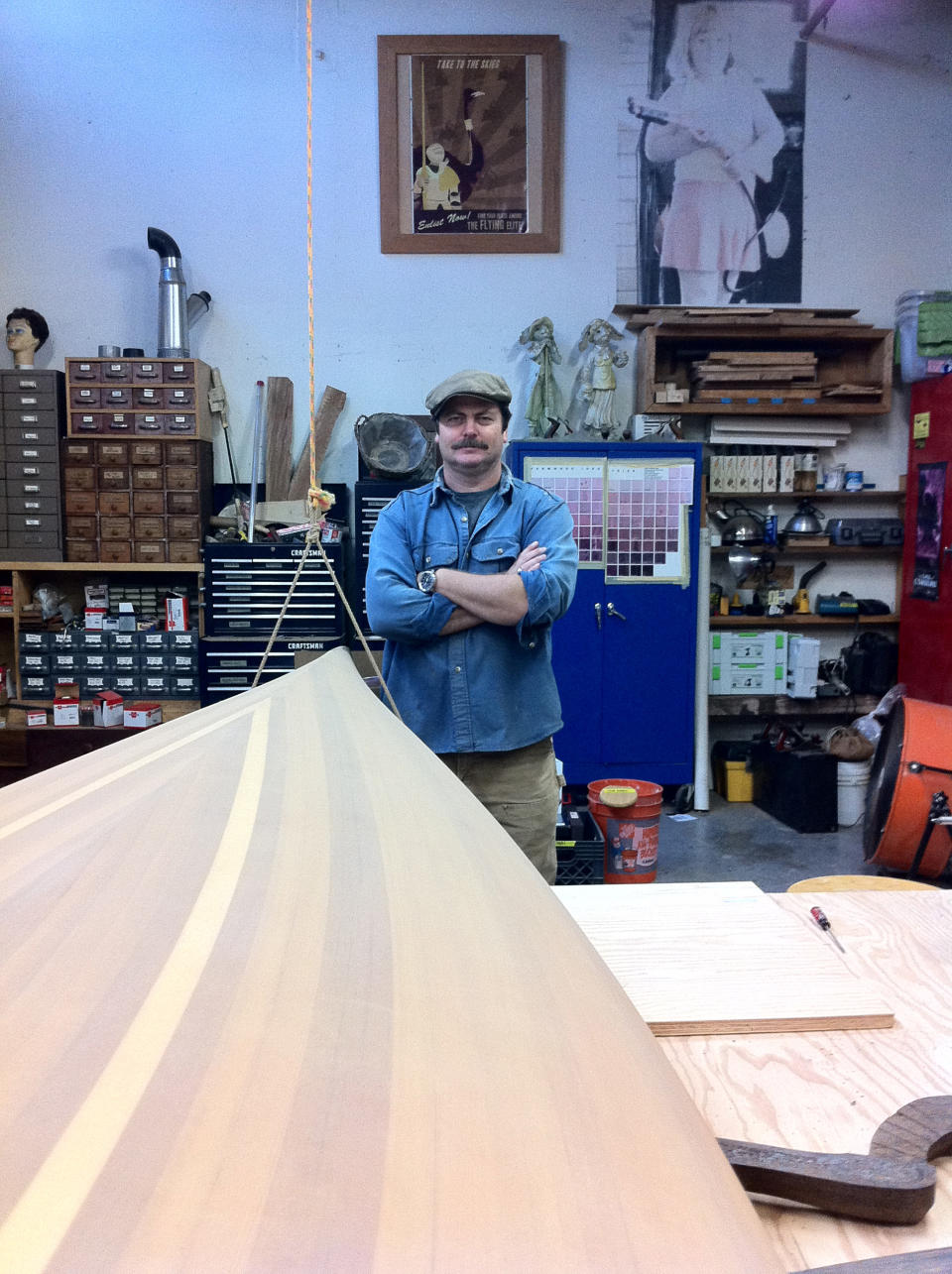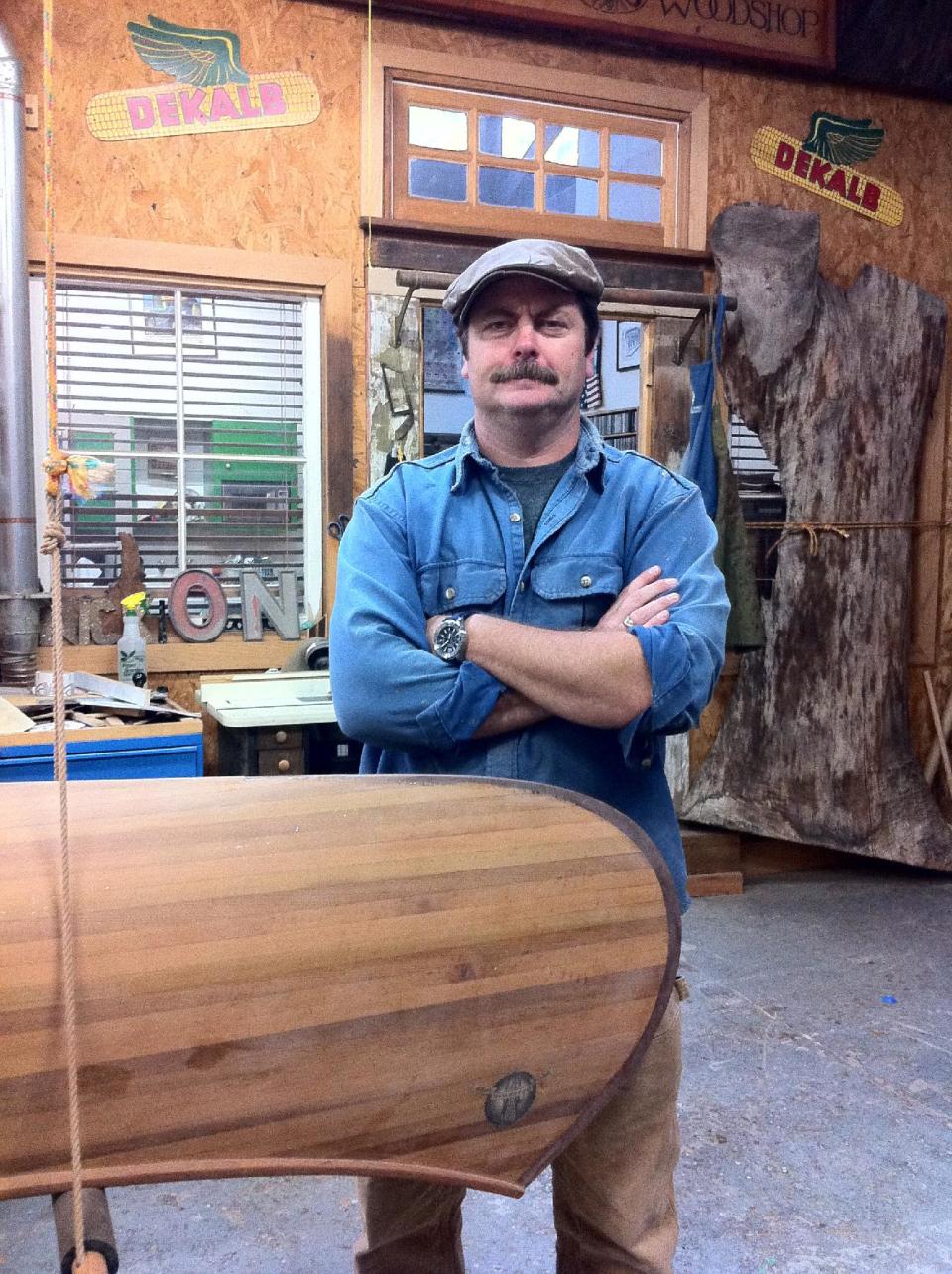Boat building: the rewards of doing it yourself
My father was recovering from a heart attack, flipping through a magazine at the library, when he decided to build his first boat.
He saw an ad for a wooden kayak kit, and something about the grace of the construction and the fact that it was done by hand struck him. Despite a lack of woodworking skills, he decided to try building one himself.
"The process was slow and plodding," he said. "But then a light bulb goes off in your head and you realize why it was designed that way, why it fits that way."
That was back in 2001, and there have been other projects since: a 14-foot sailboat, a second kayak and a guitar. Working with wood is a constant learning experience for my dad, Russ Glazer. On the phone, he'll launch into a breathless discussion of scarf joints, rolling bevels or Brazilian blood wood. He studies diagrams, calls manufacturers, browses online forums, reads instructions, and collects purple bruises and bloodied fingers.
"It's human nature to challenge yourself," he said.
There are plenty of do-it-yourself projects out there: growing a garden, brewing beer, making jewelry, sewing clothes. Building boats requires a particular kind of commitment. It's complex and expensive. It can take months or years.
And it can be addictive, working out in the garage, sawdust clinging to your clothes, making mistakes and finding the solutions yourself. After the wood is sanded, chiseled and planed, the boat is not merely assembled, but carved and coaxed into graceful curves that allow it to glide through water. In the end, you're left with a product that can either deliver you safely to harbor or not, depending on the quality of your labor.
Because the lesson is so clear - work hard, get a boat that floats - John Goodman, an interior designer from Houston, saw an opportunity to teach his kids the value of diligence and proper planning. He spent six months building a Goat Island Skiff with his daughter Desiree and son David, and when it was done, he and David, then 12, sailed it 200 miles along the coast in the 2010 Texas 200 race, camping ashore at night.
Many people advised against the trip, including, initially, the skiff's designer, Michael Storer, who said it was designed for calmer conditions. A Goat Island Skiff is similar to a rowboat with sails. It lacks the stability of a larger fiberglass boat. Shift your weight too abruptly or turn the tiller too fast and the boat jerks to the side like a spooked horse. Even in sheltered waters, wind changes can present a challenge.
Yet the Goodmans forged ahead. The trip was completed successfully, and so was the parental lesson.
"We built something that our lives depended on, a lifeboat," said Goodman. "They have great pride in that."
Another boat builder, Nick Offerman, portrays the gruff Ron Swanson, a disgruntled city employee, on NBC's "Parks & Recreation" and, like the character, enjoys building canoes.
Offerman grew up working on a family farm in Illinois where he learned to fix barns and build fences. In Chicago, he built sets to help support himself as a young actor. Then, when he moved to Los Angeles and married actress Megan Mullally ("Will & Grace"), he wasn't ready to leave woodworking behind. He found a warehouse near the Golden State Freeway where, on his days off, he builds furniture from fallen trees.
"I needed a response (to the city). There is so much plastic and glitter to this town," said Offerman, sitting in the cavernous woodworking studio. The warehouse is filled with slabs of wood stacked against the walls, tools hanging from hooks, and two canoes suspended from the ceiling.
"It was a way for me to keep attached to my family, and feel that I was maintaining my manhood," he added.
Offerman has built many things but building a canoe was different, requiring more eyeballing, more judgments made without precise measurements. With the boat, as with his other woodworking projects, he takes pride in sturdy construction.
"I wanted to learn how to build things the way people built them when they lasted," he said.
You can watch Offerman build his first canoe in a video at his website OffermanWoodshop.com. He narrates with the same deadpan voice as the character he plays, but there are moments when a childlike giddiness comes through. "OK, so far it's working," he says at one point and giggles with joy as he watches the canoe take shape beneath his hands.
That sense of accomplishment is what led Adam Green of New York City to found Rocking the Boat, a nonprofit that recruits teenagers from the South Bronx to build boats after school. In a warehouse along a sparkling stretch of the Bronx River, students who have never taken a shop class learn how to use power tools, read blueprints and problem-solve. They build sailboats and rowboats under 20 feet, and are working on a 30-foot whaling boat commissioned by the Mystic Seaport museum, in Mystic, Conn. The whaling boat will take more than two years and 24 students to complete.
Green uses boat-building to teach independence, follow-through and confidence.
"So many of our efforts go physically unrewarded," said Green. "It feels good to build something and touch what you make, especially in this digital age."
"We are creatures who can make things," he said, "and that gives us a reason for living."
___
Online:
http://offermanwoodshop.com/
http://rockingtheboat.org/
http://offermanwoodshop.com/


